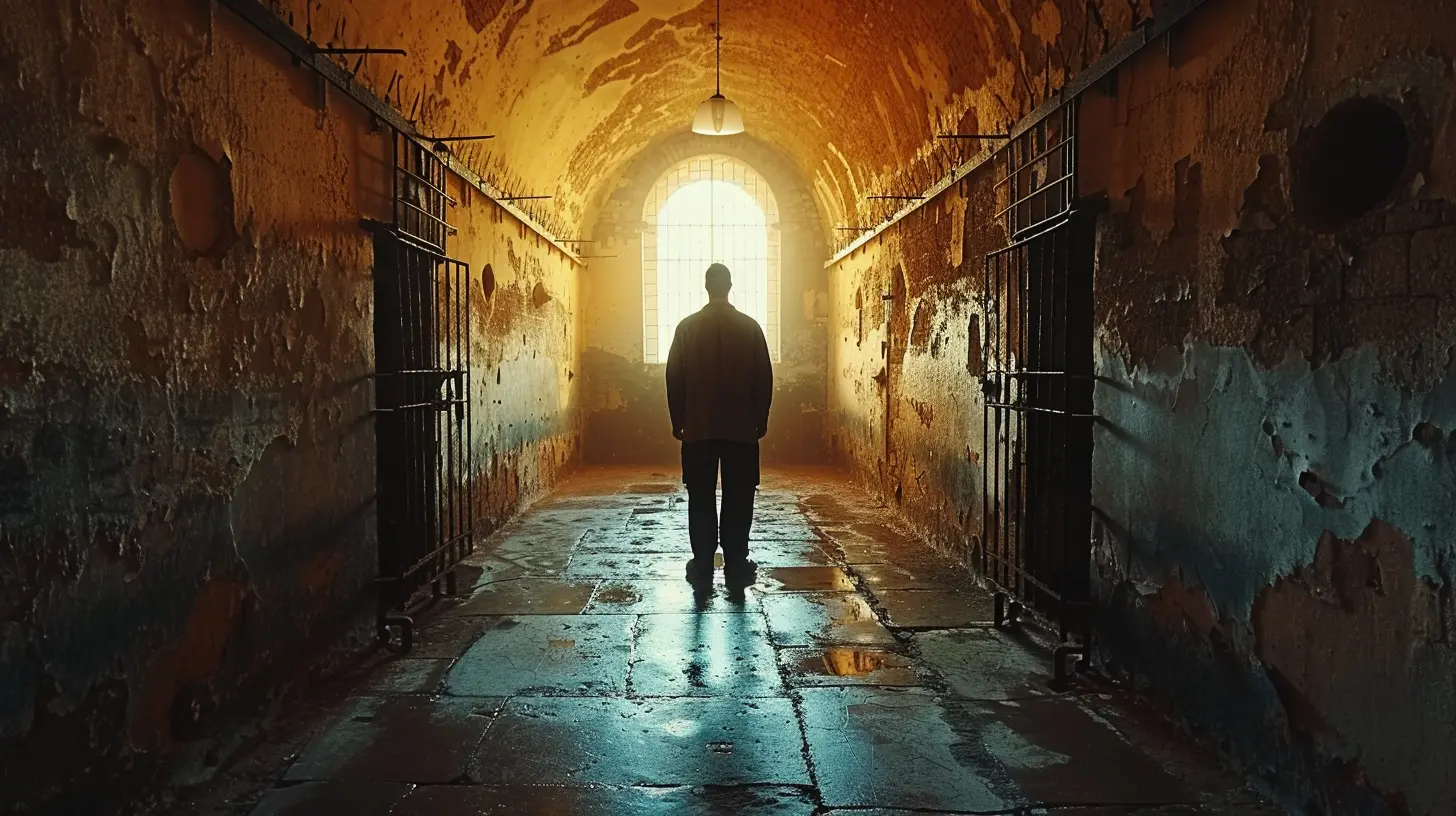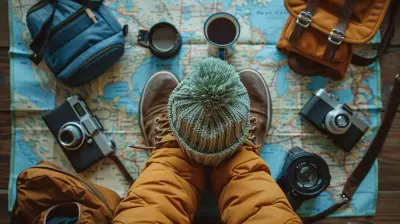4 December 2024
So, you’re planning a trip to a cold climate? Whether you're heading to the snowy Swiss Alps, the icy wilds of Alaska, or just a frosty winter weekend getaway, nothing kills the vibe faster than being underprepared. Packing for a cold climate isn’t just about throwing clothes into a suitcase and hoping for the best—oh no, it’s a science, an art, and a little bit of common sense. So, let me help you pack like a pro and avoid freezing your toes off.

Why Packing Smart for Cold Weather Matters
Before we dive into the nitty-gritty, let’s talk about why it’s so important to pack wisely for colder climates. We’ve all been there: you’re out exploring, the wind is biting, and you realize your jacket isn’t warm enough, or worse, your socks are soaked. Not fun, right?When you pack smart, you're not just saving yourself from discomfort; you’re ensuring you can enjoy your trip to the fullest. Plus, let’s be real, nobody wants to haul around a massive suitcase for no reason. The goal here is to pack light and right. 
1. Layering is Your Best Friend
Okay, let’s talk layers—it’s the golden rule of cold-weather packing. Why? Because layering allows you to adjust to changing temperatures without lugging around one massive, bulky coat. Think of it like a cake (yum!), with each layer playing its own role.The Three Essential Layers
1. Base Layer (Moisture-Wicking):This layer is all about keeping you dry. Trust me, sweat is your enemy in the cold because damp clothes = chills. Go for thermal tops and leggings made of materials like merino wool or synthetic blends. Cotton? Forget it. It soaks up sweat like a sponge and stays damp forever.
2. Middle Layer (Insulation):
This is your warmth layer. Think fleece jackets, down vests, or wool sweaters. Down is super warm and lightweight, but if it gets wet, its insulation powers disappear faster than a snow cone in summer. For wet climates, synthetic insulation might be a better bet.
3. Outer Layer (Weatherproof):
This layer protects you from wind, rain, and snow. A good waterproof and windproof jacket is non-negotiable. Look for something breathable, like a Gore-Tex shell, so you don’t feel like you’re walking around in a sauna. 
2. Choose the Right Fabrics
Fabrics can make or break your packing game. The wrong materials will leave you damp, cold, and downright miserable. Here’s the deal:- Merino Wool: Lightweight, moisture-wicking, and odor-resistant (you’ll thank me during long trips).
- Fleece: A great insulator, but not windproof.
- Down: Amazing for dry cold but keep it far, far away from moisture.
- Synthetic Blends: Often cheaper and great for wet climates.
Pro Tip: Avoid cotton like it’s a bad ex—it doesn’t insulate when wet, and it takes forever to dry. 
3. Don’t Forget About Extremities
Your fingers, toes, and head are where you’re going to lose heat the fastest. If they’re not warm, it won’t matter how cozy the rest of you is.Hats and Gloves
- Beanies: Look for a snug, fleece-lined beanie that covers your ears.- Gloves: Pack insulated, waterproof gloves, and consider thinner liner gloves for extra warmth and dexterity.
Socks
Invest in moisture-wicking wool socks (hello again, merino wool). And bring a few extra pairs—wet socks are the worst kind of misery.Footwear
- Sturdy, insulated, and waterproof boots are key.- Look for boots with good traction to avoid doing the unintentional ice-dance (you know the one).
- Don’t forget to break them in before your trip.
4. Be Smart About Accessories
Accessories are small but mighty when it comes to staying warm.Scarves and Neck Gaiters
A scarf or neck gaiter adds an extra layer of warmth around your neck and face—game-changing when the wind picks up.Hand Warmers
Toss a couple of disposable hand warmers in your bag. They’re lifesavers when temps plummet unexpectedly.Sunglasses/Goggles
Sun glare on snow is no joke. Protect your eyes with polarized sunglasses or ski goggles.5. Pack Multipurpose Items
When you’re trying to pack light, multipurpose items are your best friends.- Convertible Jackets: Jackets with removable liners are great for transitioning between cold and milder days.
- Buffs or Bandanas: These can function as scarves, headbands, or even emergency face masks.
- Travel-Friendly Gear: Consider packable down jackets or compression bags to save space.
6. Plan for Layering-Friendly Outfits
Here’s a fun fact: you don’t need to pack your entire wardrobe. By planning outfits that work well together, you can mix and match layers. Stick to neutral colors and versatile pieces—you’ll look pulled together in photos and save room for souvenirs.7. Don’t Skimp on Skincare
Cold weather isn’t just tough on your packing skills—it’s tough on your skin, too. Here’s what you’ll need:- Moisturizer: Keep your skin hydrated to avoid dryness and cracking.
- Lip Balm: Go for something heavy-duty with SPF.
- Sunscreen: Yes, really. Snow reflects sunlight, and you can still get sunburned in winter.
8. Pack Light, Pack Smart
It’s tempting to overpack “just in case,” but remember—you’ll still have to carry that luggage around. Stick to the essentials and pack in layers. Roll your clothes to save space, use packing cubes for organization, and wear your bulkiest items (like boots and coats) on travel days.Pro Tip: If you’re traveling somewhere remote, check if laundry facilities are available. Being able to wash and re-wear items can drastically cut down your packing needs.
9. Prepare for the Worst-Case Scenario
I hate to sound like your mom, but it’s better to be over-prepared than sorry. Pack these extras “just in case”:- Emergency Blanket: Lightweight and compact, but a lifesaver in extreme cold.
- First Aid Kit: You never know when you might need one.
- Multi-tool or Swiss Army Knife: Because who doesn’t want to feel like Bear Grylls?
10. Tech and Gadgets for Cold Weather
If you’re bringing gadgets, you’ll need to consider the cold. Batteries drain faster in low temperatures, so keep electronics (like your phone or camera) close to your body to stay warm. Invest in a portable charger and pack extra batteries to stay powered up.11. Stuff You Might Overlook
Here’s a list of easy-to-forget items that are clutch in cold climates:- Reusable Water Bottle: Staying hydrated is just as important in the cold.
- Snacks: High-calorie snacks like trail mix or energy bars keep you fueled on long days.
- Daypack: Perfect for carrying layers, snacks, and other essentials during outings.










Valen McAnally
Packing smart for a cold climate adventure opens up a world of exploration! Embrace the chill with the right gear and a positive mindset. Adventure awaits, so bundle up and step out into the beauty of winter’s wonderland!
February 15, 2025 at 3:22 AM